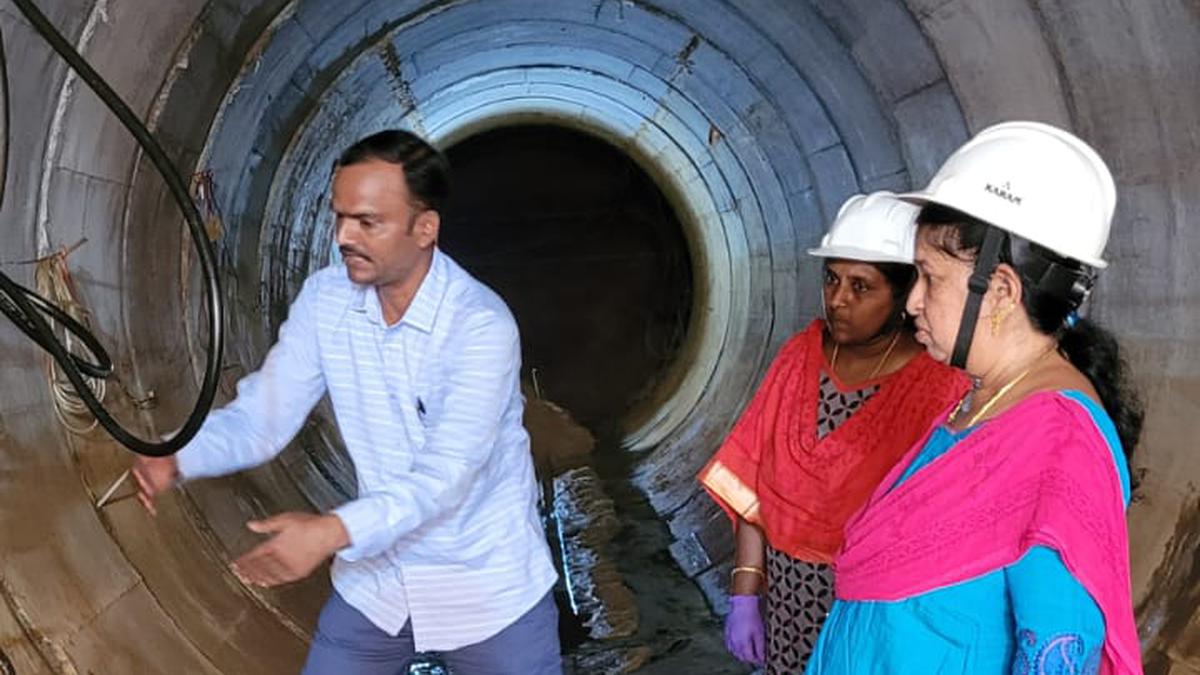
Work on second pipeline from Chembarambakkam plant gains pace
The Hindu
The project is being executed to convey the maximum quantity of treated water from the plant to the city. The 530-mld plant has not been operated at its full capacity since its inception due to a lack of adequate distribution infrastructure
The work to lay a second pipeline from the Chembarambakkam treatment plant to the city’s water distribution network has gained pace.
After several challenges, the complex task to lay the 3-m diameter pipeline at a depth of 6 m from ground level along Nation Highway 4 at Poonamallee is being executed to convey the maximum quantity of treated water from the plant at Chembarambakkam to the city. The 530-million-litres-a-day (mld) plant has not been operated at its full capacity since its inception due to a lack of adequate distribution infrastructure.
Officials of the Chennai Metrowater said the outer encasing pipe, made of reinforced cement concrete material, was being laid using trenchless technology. This would facilitate the laying of a 2-m diameter mild steel pipeline, which would carry drinking water to the city. Nearly 75% of the work had been finished so far.
“We are using the pipe jack pushing method for laying the pipelines. The tunnelling technology used in CMRL works would be more suited for longer stretches. As of now, we must complete laying a stretch of 120 m. This work will be completed in three months,” said an official.
The ₹43.75-crore project was chalked out in 2013 to lay a second water transmission pipeline from the plant along Poonamallee High Road.
However, cancellation of the contract in 2019 due to a delay in work. The National Highway widening project and Metro Rail works had pushed the project deadline. Abundant quantity of subsoil water in the project site due to proximity of the Chembarambakkam lake had also posed a challenge for the work, officials said.
Once the project is completed, it would help provide an additional 260 mld of drinking water to the city. Besides central areas, southern localities up to Adyar and also merged areas enroute, like Nerkundram, would get sufficient drinking water.













